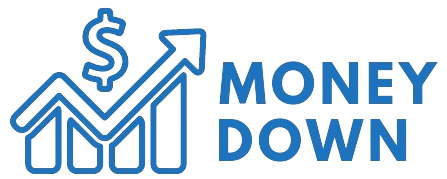Over the past half century, economists and market participants have introduced increasingly sophisticated models to clarify the ups and downs of stock markets. With some adjustments to corporate earnings Measures and risk-free RatesThese methods describe market movements quite well.
However, there may be an easier solution to explain the behavior of stocks. What if we deemphasized their financial nature and viewed them as high-value consumer goods – luxury watches, for instance – whose prices are determined by the forces of supply and demand?
Stocks are very essential to Abraham Maslow Hierarchy of human needs. Simply put, we buy stocks only after now we have taken care of our housing, food, transportation, education, and other more immediate concerns. The higher our income, the more freely we are able to spend money on stocks and vice versa.
From this angle, income inequality becomes a hidden driver of stock prices. In a really equal society, shares are less in demand. Why? Because the necessity for shelter and consumer goods is more essential than the necessity to have supplies. Imagine 20 households each have an annual income of $50,000, while a single household has $1,000,000. According to our researchThe demand for stocks from the latter household is nearly twenty times higher than that of the opposite 20 households combined.
While the stock performance models of traditional finance still work, there may be an alternate explanation for the 40-year secular bull market based on nineteenth century laws of supply and demand.
On the demand side, increasing income inequality routinely drives up demand for stocks and subsequently returns. On the availability side, net issuance of shares has been paltry for the reason that Securities and Exchange Commission (SEC) legalized share buybacks in 1982.
Classical economics explains what happens when demand for increases faster than its supply: The real price of the great must rise. Thus, the secular bull market that began in 1982 was the direct results of strong demand growth fueled by, amongst other things, increasing income inequality, coupled with unmatched supply.
According to our evaluation, the true price return of the S&P 500 in the course of the bull market from 1982 to 2021 was 6.9% per yr. That’s 6.2 percentage points greater than the 0.7% generated annually between 1913 and 1982.
What explains this difference? We find that 2.4 percentage points of excess return is as a consequence of some type of fundamental change. Income equality increased within the late Nineteen Seventies and early Eighties, but then the tide turned and increasing income inequality has since develop into the norm.
Another 1.4 percentage points of excess return comes from the availability shortage attributable to the SEC’s stock repurchase decision in 1982. The rest is as a consequence of increasing equity allocations, lower inflation and lower rates of interest, amongst various other aspects.
So what would have been if the world had been different? Had income inequality trends not reversed or the SEC not allowed buybacks, the true price of the S&P 500 in 2021 would have been completely different. We express this dynamic by specializing in the actual price performance of a $10,000 investment made within the S&P 500 in 1982 and realized over the course of 2021.
Result of an investment of $10,000 made in 1982 and realized in 2021
(Average real S&P 500 price index in 1982: 317)
Buybacks as they’re
| assumption | Inequality because it is | Negative inequality Trend stopped in 1982 |
Negative inequality Trend continues since 1982 |
| Dividends full Reinvested |
$315,000 | $193,000 | $133,000 |
| Not dividends Reinvested |
$134,000 | $81,000 | $56,000 |
| Average real S&P 500 price (in 2021 dollars) |
4,261 | 2,581 | 1,764 |
Buybacks as before 1982
| assumption | Inequality because it is | Negative inequality Trend stopped in 1982 |
Negative inequality Trend continues since 1982 |
| Dividends full Reinvested |
$315,000 | $193,000 | $133,000 |
| Not dividends Reinvested |
$81,000 | $49,000 | $33,000 |
| Average real S&P 500 price (in 2021 dollars) |
2559 | 1540 | 1047 |
The market would have risen in all scenarios. However, there may be a giant difference between the S&P 500’s 230% rise in essentially the most pessimistic scenario and its actual 1240% rise. While income inequality is just not the be-all and end-all of stock market performance, it’s a critical factor that has remained hidden until now.
What does this mean for the long run viability of the secular bull market?
Cyclical headwinds will definitely play a job at times, akin to last yr. But rising income inequality will proceed to drive stock markets unless the ballot box decides otherwise.
If you enjoyed this post, do not forget to subscribe.
Photo credit: ©Getty Images / Zorica Nastasic



